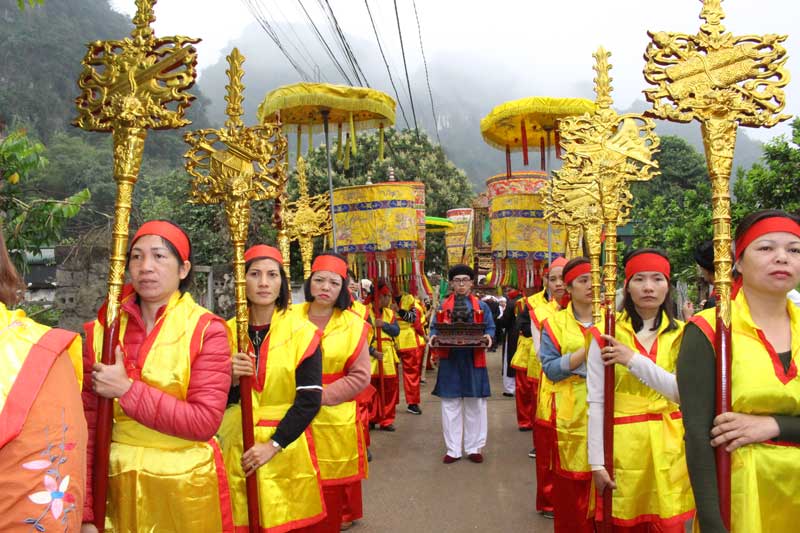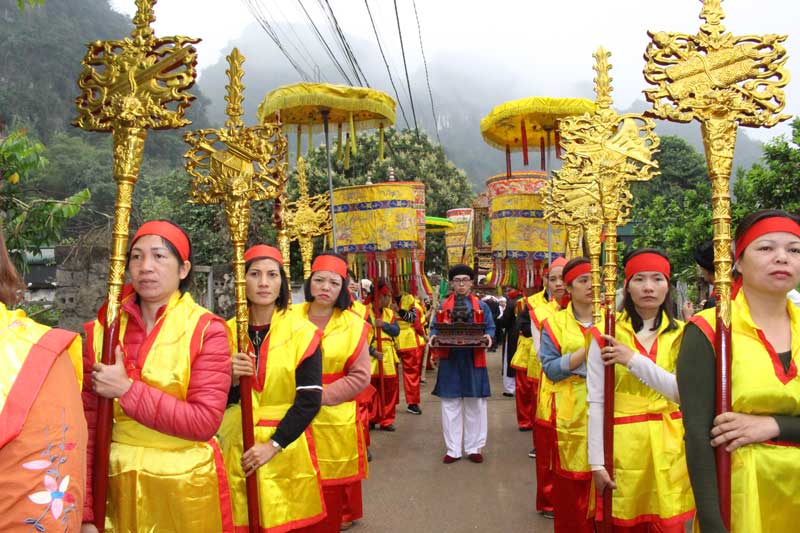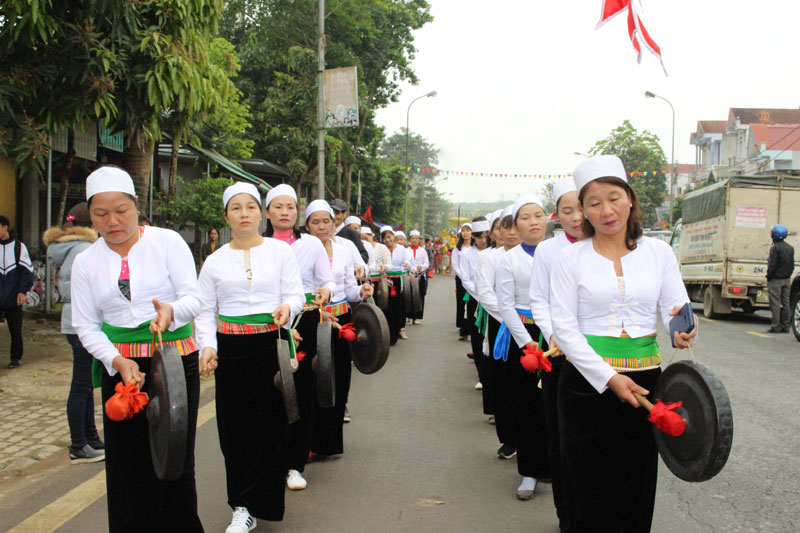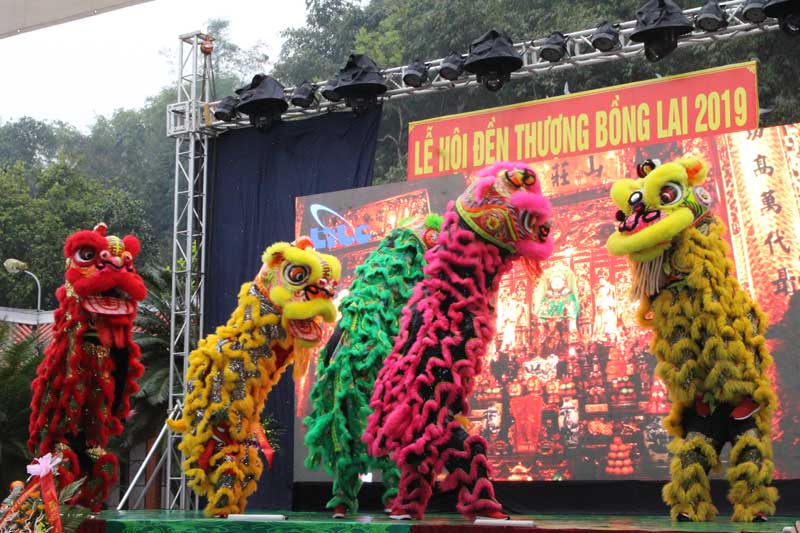
HBO - The People’s Committee of Cao Phong township coordinated with the management board of Bong Lai Thuong temple in organising the Bong Lai Thuong temple festival 2019 on March 6-7.
Bong
Lai temple worships De Nhi Thuong Ngan Tien Nuong (The second Mother
Goddess of Forest, goddesses
and saints from four palaces). The temple was built under the reign of King
Thanh Thai (the Year of Tiger in 1890). However, due to time, the temple
severely degraded, and there are only some old vestiges left in the land of the
temple along with the existence of Thien Thai cave and several other majestic
caves in the Dau Rong (dragon head) Mountain.
Thanks
to the spiritual and material support from the local authorities and residents,
manager of the temple Tran Van Hai decided to restore the temple. In 2012, the Bong
Lai Thuong temple was recognised as a national cultural and historical relic
site by the Ministry of Culture, Sports and Tourism.

The
procession of the female saint from Bong Lai Thuong temple to Dong Son temple.
The
Bong Lai Thuong temple festival features the procession of the female saint
from the Bong Lai Thuong temple to the Dong Son temple, which worships the
second Muong God Dieu Tin and Zen master Cao Son, and then from the Dong Son
temple to the Bong Lai Thuong temple; worshiping rituals; and the 16-line
sacrifice Hanh Lanh Giang Vong.
Festive
activities include art performances and sport events.

Gong
performers of Cao Phong join the procession of the female saint from Bong Lai
Thuong temple to Dong Son temple.

Lion dancing at Bong Lai Thuong
temple festival 2019.
With an increasingly vibrant and widespread emulation movement aimed at building cultured residential areas and cultured families, Yen Thuy District has been making steady progress toward improving both the material and spiritual well-being of its people, while fostering a civilized, prosperous, beautiful, and progressive community.
Once lacking recreational spaces and community facilities, Residential Group 2 in Quynh Lam Ward (Hoa Binh City) has recently received attention for the construction of a new, spacious, and fully equipped cultural house. The project followed the model of state support combined with public contributions in both labor and funding.
The "All people unite to build cultural life" movement, which has been effectively integrated with Kim Boi district’s socio-economic development goals, is fostering a lively spirit of emulation across local residential areas, hamlets, villages, public agencies, and enterprises. In addition, through the initiative, traditional cultural values are being preserved and promoted, while community solidarity and mutual support in poverty reduction and economic development are being strengthened.
A working delegation of the Hoa Binh provincial People’s Committee led by its Permanent Vice Chairman Nguyen Van Toan on June 11 inspected the progress of a project to build the Mo Muong Cultural Heritage Conservation Space linked to tourism services in Hop Phong commune, Cao Phong district.
Born and growing in the heroic land of Muong Dong, Dinh Thi Kieu Dung, a resident in Bo town of Kim Boi district, in her childhood was nurtured by the sweet lullabies of her grandmother and mother. These melodies deeply imprinted on her soul, becoming an inseparable part of her love for her ethnic group's culture. For over 20 years, this love for her hometown has driven Dung to research, collect, and pass down the cultural values of the Muong people to future generations.
In the final days of May, the Ethnic Art Troupe of Hoa Binh Province organized performances to serve the people in remote, mountainous, and particularly disadvantaged areas within the province. These were not just ordinary artistic shows, but they were the meaningful journeys aimed at spreading cultural values, enhancing the spiritual life of the people and contributing to the preservation of ethnic minority cultural identities.





